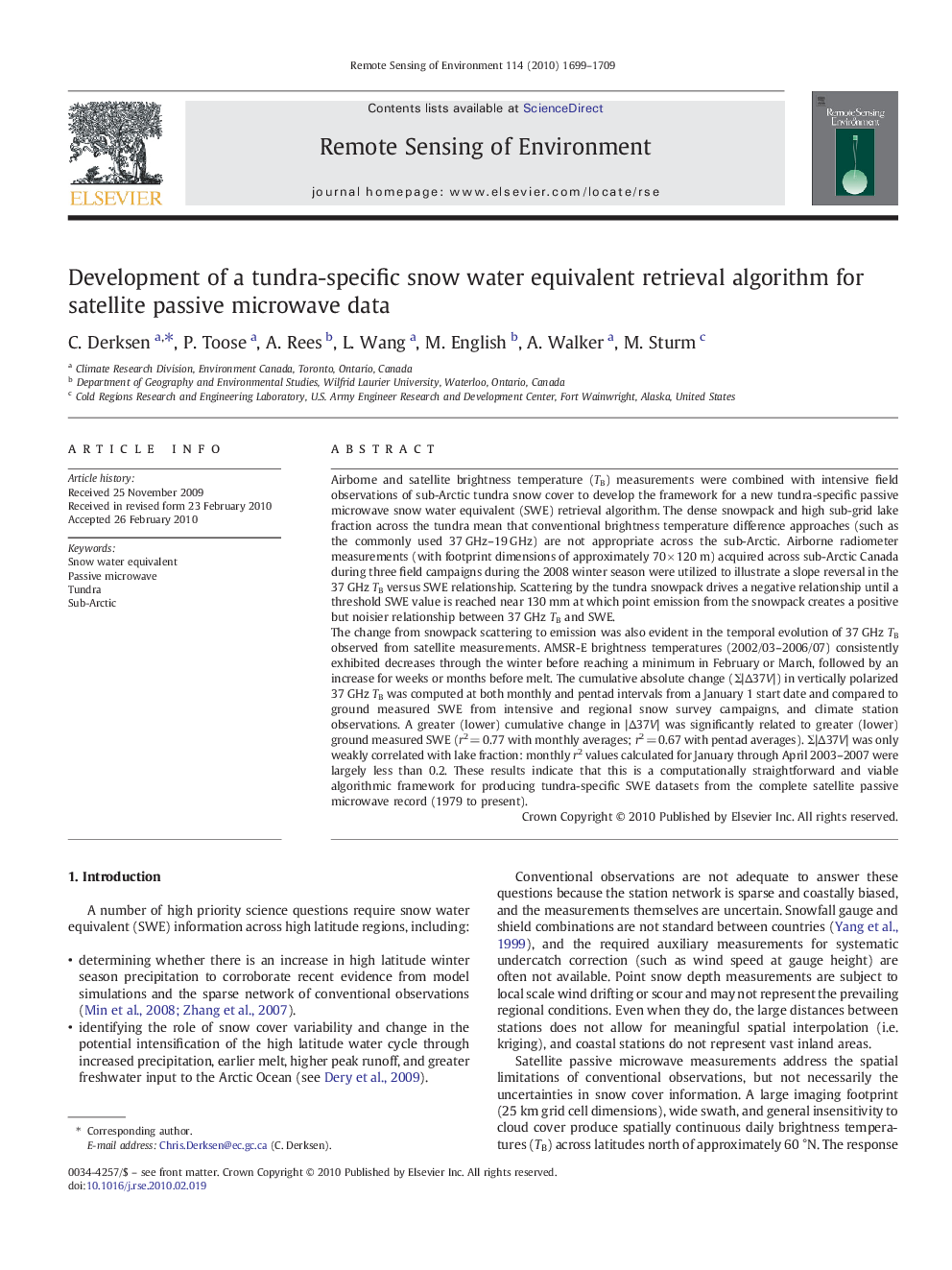| Article ID | Journal | Published Year | Pages | File Type |
|---|---|---|---|---|
| 4459968 | Remote Sensing of Environment | 2010 | 11 Pages |
Airborne and satellite brightness temperature (TB) measurements were combined with intensive field observations of sub-Arctic tundra snow cover to develop the framework for a new tundra-specific passive microwave snow water equivalent (SWE) retrieval algorithm. The dense snowpack and high sub-grid lake fraction across the tundra mean that conventional brightness temperature difference approaches (such as the commonly used 37 GHz–19 GHz) are not appropriate across the sub-Arctic. Airborne radiometer measurements (with footprint dimensions of approximately 70 × 120 m) acquired across sub-Arctic Canada during three field campaigns during the 2008 winter season were utilized to illustrate a slope reversal in the 37 GHz TB versus SWE relationship. Scattering by the tundra snowpack drives a negative relationship until a threshold SWE value is reached near 130 mm at which point emission from the snowpack creates a positive but noisier relationship between 37 GHz TB and SWE.The change from snowpack scattering to emission was also evident in the temporal evolution of 37 GHz TB observed from satellite measurements. AMSR-E brightness temperatures (2002/03–2006/07) consistently exhibited decreases through the winter before reaching a minimum in February or March, followed by an increase for weeks or months before melt. The cumulative absolute change (Σ|Δ37V|) in vertically polarized 37 GHz TB was computed at both monthly and pentad intervals from a January 1 start date and compared to ground measured SWE from intensive and regional snow survey campaigns, and climate station observations. A greater (lower) cumulative change in |Δ37V| was significantly related to greater (lower) ground measured SWE (r2 = 0.77 with monthly averages; r2 = 0.67 with pentad averages). Σ|Δ37V| was only weakly correlated with lake fraction: monthly r2 values calculated for January through April 2003–2007 were largely less than 0.2. These results indicate that this is a computationally straightforward and viable algorithmic framework for producing tundra-specific SWE datasets from the complete satellite passive microwave record (1979 to present).
